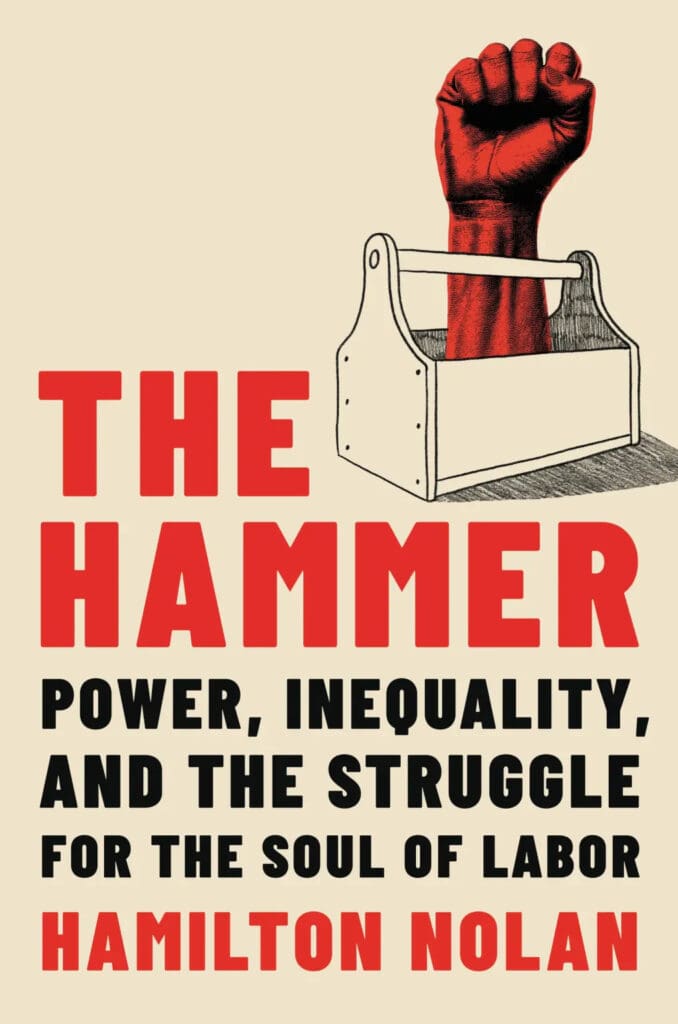According to a spate of recent articles in The New York Times and elsewhere, American workers and their trade unions are “flexing their muscles.” Indeed, a survey conducted by Margaret Poydock and Jennifer Sherer that was published by the Economic Policy Institute says “major strike activity” in the U.S. increased by 280 percent in 2023. Headlines amplify the data. In September 2023, more than 12,000 workers went on strike at General Motors and Ford. In October 2023, more than 75,000 Kaiser Permanente health care workers staged the largest recorded health care strike in U.S. history. A month later, roughly 5,000 Starbucks workers went on strike to protest the company’s refusal to bargain in good faith.
To accomplish their goals, the Industrial Workers of the World, aka the Wobblies, will need to do more than flex their muscles. They’ll need “soul,” as Hamilton Nolan insists. He’s a member of the Writers Guild of America, East, and a veteran labor reporter, and ought to know. Nolan’s new book, The Hammer: Power, Inequality, and the Struggle for the Soul of Labor (Hachette; $30), boasts a rousing subtitle. Yes, labor has a soul, though historians of the trade union movement might insist that it sold it to the capitalist devil decades ago.
Nolan knows the story of cooptation and collaboration, but he has never given up his faith in the working class, its cutting-edge organizations, and its strength in unity. “Unions,” he writes in the introduction to his book, “neglected, decrepit, and forgotten, though they were—are the single most important tool that exists to fix our single most important problem.” For Nolan, that problem translates into social, economic, and political inequality with workers and their families near the bottom of the ladder—and plutocrats at the top.
In twelve chapters that are written mostly without jargon and slogans, but with focused energy, Nolan takes readers to South Carolina, West Virginia, Nevada, California, and Oregon. In the first and the last chapters he writes about Sara Nelson, an organizer and leader of the Association of Flight Attendants. The New York Times calls her “America’s Most Powerful Flight Attendant.”
“All labor reporting is about people,” Nolan explains in his acknowledgments. Accordingly, he writes not only about Nelson but about Moren Algorri, a Mexican-born organizer who lives in Chula Vista, California; Patricia Moran, a Bolivian-born activist living in San Jose; and others with similar backgrounds. As Nolan knows, the American working class is no longer largely made up of white guys carrying six packs, smoking Camels, and paying dues to the AFL-CIO. The laborers who are flexing their muscles and energizing their souls are young women as well as older men, white, Black, gay, the young, the old, the documented, and the undocumented. They are also often, as Nolan knows, unorganized.
In his second chapter, Nolan dissects South Carolina, which he calls “the place where unions go to die.” He then maps the world of California’s underpaid child-care workers. Midway through his proletarian Odyssey, he’s with Las Vegas’s culinary workers, and on the last leg he meets biscuit bakers in Elkview, West Virginia. There, he follows the life and times of Cynthia Nicholson. The daughter of a union man, and the spouse of one, too, she rolls up her sleeves and makes unionizing her mission.
Nolan wraps up his continental journey with a chapter titled “The Path: How the Labor Movement Can Save America and Itself.” He knows that won’t be a slam dunk, but he also knows that laborers can exercise the power of solidarity. Sounding a bit like Karl Marx, he writes, “Hey, friends. Hey, workers of the world. Pick up that hammer, and start smashing.”
Jonah Raskin is the author of, among other books, For the Hell of It: The Life and Times of Abbie Hoffman and Field Days: A Year of Farming, Eating and Drinking Wine in California.

